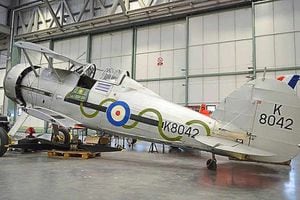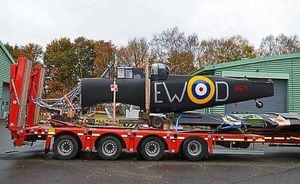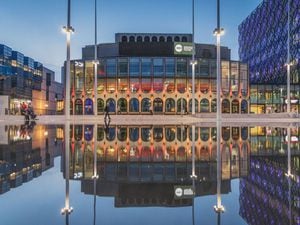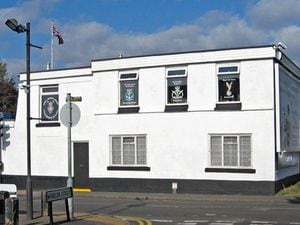War planes wing way to RAF Cosford museum
RAF Museum Cosford has taken delivery of three Second World War aircraft that will soon become its latest star exhibits.

The Boulton Paul Defiant Mk 1, the Gloster Gladiator 1 and the Westland Lysander III have all been safely transported by road from the museum's London site and are currently being prepared for display at Cosford.
It is a homecoming for the Boulton Paul Defiant Mk 1, the last surviving example of its kind, built by Boulton Paul at its Pendeford factory in Wolverhampton in 1938.
This two-seat turret fighter was in the skies during the Battle of Britain period but found its niche as a night fighter from 1940 to 1942.
They were used extensively later in the war for air-sea rescue and target tug roles in the UK and Middle and Far East.
The museum's model, serial number N1671, was operated by the newly-formed No 307 (Polish) Squadron RAF, who became operational in December 1940.
It was painted in its all black night fighter colour scheme the following January and carried out 15 patrols before moving to No 285 (Anti-aircraft Co-Operation) Squadron in June 1942, its last operational user.

It was originally set aside for preservation in 1944 and spent several years moving between RAF bases for display.
It was eventually acquired by the RAF museum in 1971 and after almost four decades on display at the museum's London site, the aircraft was completely restored by Medway Aircraft Preservation Society at Rochester Airport in 2009, going back on display at the museum in 2012.
Now the sole surviving intact example of its type has made the 130-mile journey from London to Cosford where it will go on public display early in the new year.
Another new aircraft to wing its way to Cosford is the Gloster Gladiator 1, the last biplane fighter introduced into RAF service. It was employed overseas particularly in the defence of Malta.
At the outbreak of the Second World War, four home-based RAF fighter squadrons equipped with Gladiators were sent to France and after just 10 days of hard fighting, all the aircraft had been lost.
The aircraft also provided cover for the little ships involved in the Dunkirk evacuation.
The museum's example, serial number K8042, has been displayed at RAF Museum London since opening in 1972 and this is the first time the aircraft will be displayed at the museum's Cosford site.
Also joining the aircraft collection at RAF Museum Cosford is the Westland Lysander III, the only surviving special duties variant of this aircraft.

It was designed to operate closely with the army and worked ferrying Allied agents in and out of enemy occupied Europe.
The museum's new exhibit, serial number R9125 first became operational with No 225 Squadron in 1940 as a coastal patrol and photo reconnaissance aircraft, based along the south coast of England.
For a brief period in 1961 the aircraft was placed into storage at RAF Cosford and 10 years later it was acquired by the museum and placed on display at its London site, where it has remained until its recent move to Cosford.
Ian Thirsk, head of collections at the RAF museum, said: "It's been a busy month at Cosford with five new aircraft arrivals.
"We took delivery of the Bf109 and the Tiger Moth earlier this month and now we welcome the Defiant, Gladiator and Lysander to the collection at Cosford.
"The Junkers Ju 88R-1, a sub-type of the most versatile German combat aircraft of the Second World War will complete the new line-up and is due to arrive before the New Year.
"The museum's centenary plans have provided an exciting opportunity to relocate significant aircraft in the collection closer to aviation fans in the Midlands. In total Cosford will have received six new aircraft in the final few months of this year."





